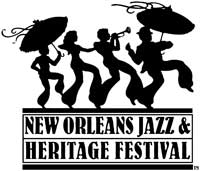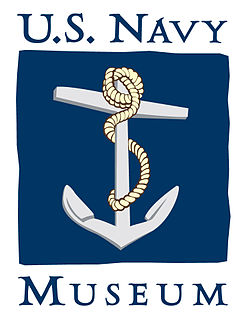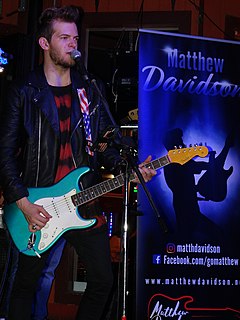
The National Museum of American History: Kenneth E. Behring Center collects, preserves, and displays the heritage of the United States in the areas of social, political, cultural, scientific, and military history. Among the items on display is the original Star-Spangled Banner. The museum is part of the Smithsonian Institution and located on the National Mall at 14th Street and Constitution Avenue NW in Washington, D.C.

The New Orleans Jazz & Heritage Festival is an annual celebration of local music and culture held at the Fair Grounds Race Course in New Orleans, Louisiana. Jazz Fest attracts thousands of visitors to New Orleans each year. The New Orleans Jazz & Heritage Festival and Foundation Inc., as it is officially named, was established in 1970 as a 501(c)(3) nonprofit organization (NPO). The Foundation is the original organizer of the New Orleans Jazz & Heritage Festival presented by Shell Oil Company, a corporate financial sponsor. The Foundation was established primarily to redistribute the funds generated by Jazz Fest into the local community. As an NPO, their mission further states that the Foundation "promotes, preserves, perpetuates and encourages the music, culture and heritage of communities in Louisiana through festivals, programs and other cultural, educational, civic and economic activities". The founders of the organization included pianist and promoter George Wein, producer Quint Davis and the late Allison Miner.

WWOZ is a non-profit community-supported radio station in New Orleans. It is owned by the New Orleans Jazz & Heritage Foundation. The station specializes in music from or relating to the cultural heritage of New Orleans and the surrounding region of Louisiana. The playlist includes Jazz, Blues and other world music.

The New Orleans Mint operated in New Orleans, Louisiana, as a branch mint of the United States Mint from 1838 to 1861 and from 1879 to 1909. During its years of operation, it produced over 427 million gold and silver coins of nearly every American denomination, with a total face value of over US$ 307 million. It was closed during most of the American Civil War and Reconstruction.

The Louisiana State Museum (LSM), founded in New Orleans in 1906, is a statewide system of National Historic Landmarks and modern structures across Louisiana, housing thousands of artifacts and works of art reflecting Louisiana's legacy of historic events and cultural diversity.

The National Museum of the United States Navy, or U.S. Navy Museum for short, is the flagship museum of the United States Navy and is located in the former Breech Mechanism Shop of the old Naval Gun Factory on the grounds of the Washington Navy Yard in Washington, D.C., United States.
River Road African American Museum is a museum of culture and history in Donaldsonville, Louisiana, United States. Founded in 1994, it was among the first Louisiana museums to tell the story of Africans and African Americans, both slave and free. The museum notes their contributions to the River Road region, both before and after the American Civil War. Because of its significance, the museum was identified as one of the first 26 sites included by the state in 2008 on the Louisiana African American Heritage Trail.

The culture of New Orleans is unique among, and distinct from, that of other cities in the United States, including other Southern cities. New Orleans has been called the "northernmost Caribbean city" and "perhaps the most hedonistic city in the United States". Over the years, New Orleans has had a dominant influence on American and global culture.
Arthur Hazel, better known as Monk Hazel, was a jazz drummer.

The New Orleans Museum of Art is the oldest fine arts museum in the city of New Orleans. It is situated within City Park, a short distance from the intersection of Carrollton Avenue and Esplanade Avenue, and near the terminus of the "Canal Street - City Park" streetcar line. It was established in 1911 as the Delgado Museum of Art.

The Historic New Orleans Collection (THNOC) is a museum, research center, and publisher dedicated to the study and preservation of the history and culture of New Orleans and the Gulf South region of the United States. It is located in New Orleans' French Quarter. The institution was established in 1966 by General and Mrs. L. Kemper Williams to keep their collection of Louisiana materials intact and available for research and exhibition to the public.
Edmond "Doc" Souchon was an American jazz guitarist and writer on music. He was a pivotal figure in the historical preservation of New Orleans jazz in the middle of the 20th century.

The International Museum of World War II was a not-for-profit museum devoted to World War II located in Natick, Massachusetts, a few miles west of Boston. It was formed over a period of more than 50 years by its founder, Kenneth W. Rendell, one of the world's premier dealers in autographs, letters and manuscripts, who has earned international renown as an authenticator of historic artifacts. The museum's collections documented the events of the war, from the signing of the Treaty of Versailles ending World War I to the Nuremberg and Tokyo war crimes trials. The museum's goal was to preserve the reality of the history of World War II and to provide an educational experience of the lessons to be learned. In 2016, the Museum of World War II became The International Museum of World War II to reflect its being the only museum in the world with an international collection of letters, documents, and artifacts.
Elizabeth Allison Miner was a music promoter and manager who was instrumental in the early production of the New Orleans Jazz & Heritage Festival and the later career of pianist Professor Longhair.

The Hotel St. Pierre is a collection of Creole cottages, many dating from the early 1780s, in the French Quarter of New Orleans, Louisiana, U.S.A. Its business address is 911 Burgundy Street.

Matthew Davidson is an American guitarist, singer and songwriter originally from Shreveport, Louisiana and now based in Nashville, TN. He is currently touring with Travis Denning. He has performed at the Grand Ole Opry, on Today with Hoda and Jenna, and on Broadway in downtown Nashville at venues such as Dierks Whiskey Row, The Stage, Legends Corner, Second Fiddle, Jason Aldean's, and Luke Bryan's 32 Bridge. He graduated in 2020 from Belmont University with a Bachelor of Music in Commercial Guitar. Matthew has played guitar for supporting artists opening for Walker Hayes and Willie Nelson.
The following is a timeline of the history of the city of New Orleans, Louisiana, USA.

Satchmo SummerFest is an annual music festival held in New Orleans, Louisiana, in celebration of the jazz trumpeter Louis Armstrong. It is held in early August in order to coincide with August 4, Armstrong's birthday. It was founded in 2001, in conjunction with Armstrong's centennial celebration.

The Amistad Research Center (ARC) is an independent archives and manuscripts repository in the United States that specializes in the history of African Americans and ethnic minorities. It is one of the first institutions of its kind in the United States to collect African American ethnic historical records and to document the modern Civil Rights Movement.

Doreen Ketchens is an American jazz clarinetist who performs Dixieland and Trad Jazz. She has performed at concert halls, music festivals, and U.S. embassies, as well as in decades of weekly performances in Dixieland's tradition in the Royal Street Performing Arts Zone in the French Quarter of New Orleans with her band, Doreen's Jazz New Orleans. Ketchens has performed for four U.S. presidents: Bill Clinton, George Bush Sr., Ronald Reagan and Jimmy Carter, and was described by Nola.com in 2012 as one of the cultural ambassadors of New Orleans.




















